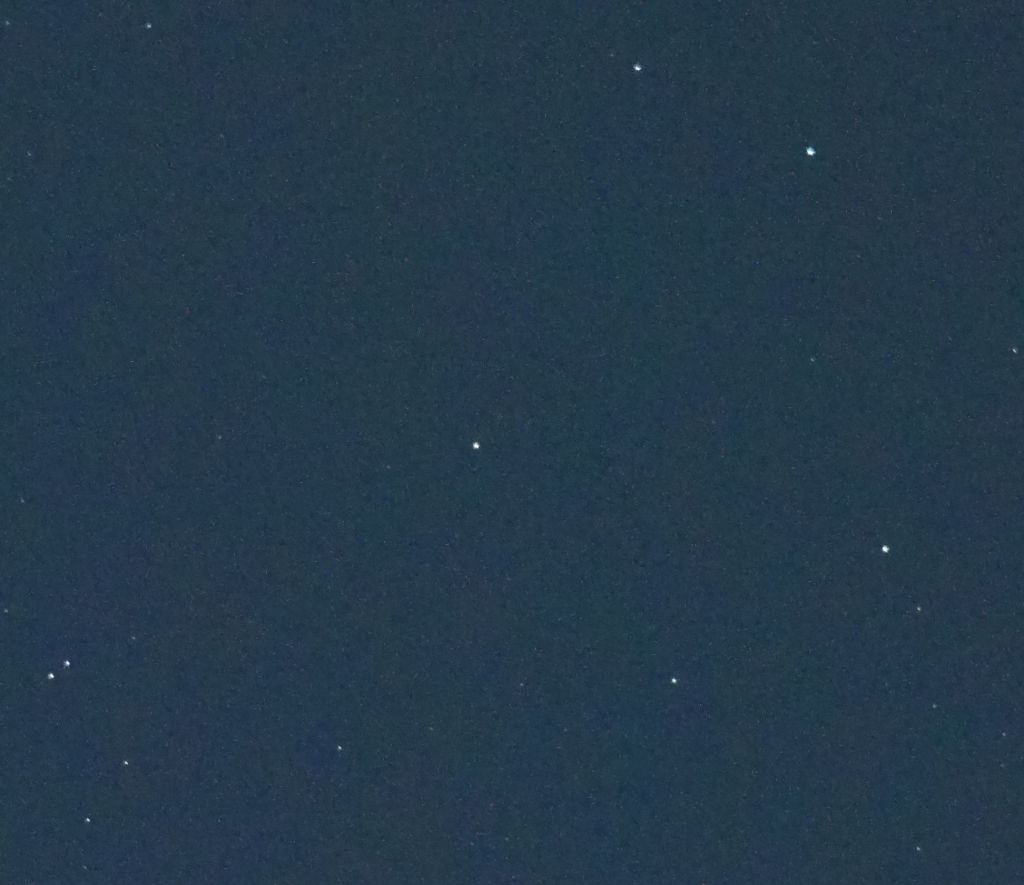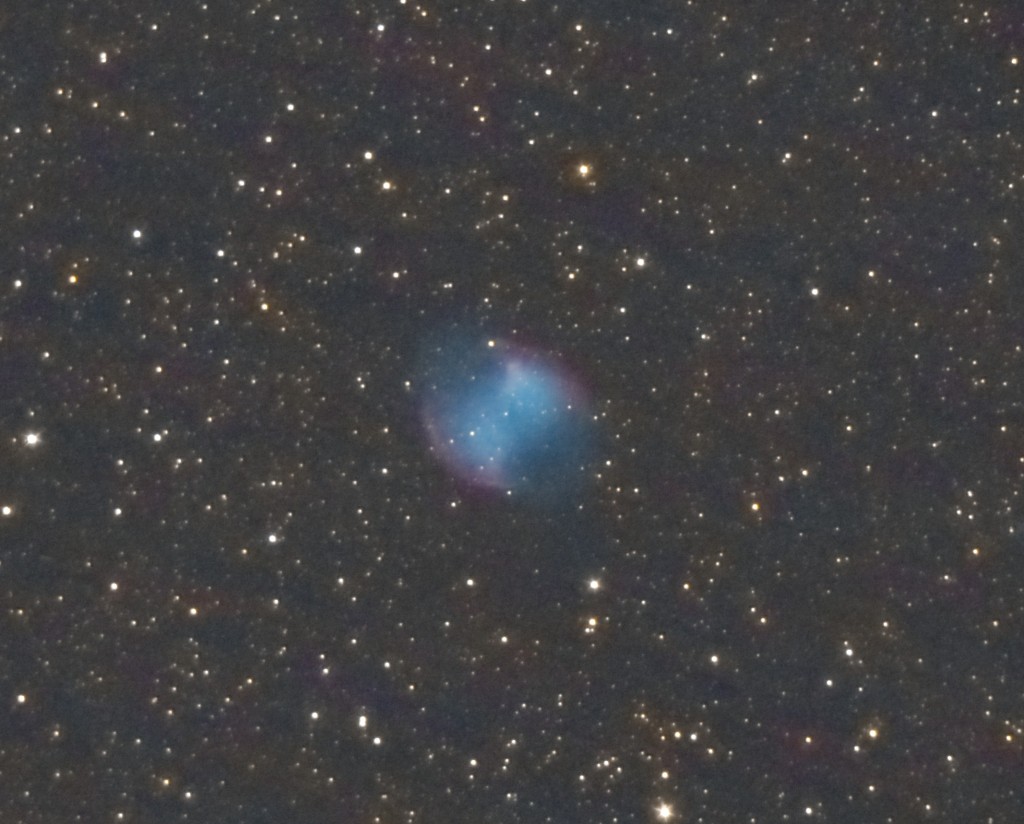It was a 3/4 moon last night.

That means that most faint objects were drowned out by the moon’s light. Nevertheless, it was a clear, wind free night. Too rare an occurrence to pass up. So around midnight I wandered out into the back garden and set the telescope up.
After the moon itself, the next object I wanted to find was this unassuming looking star, T Coronae Borealis.

I wanted to familiarise myself with this patch of sky as it’s pretty hard to find, even with the help of a goto scope. Sometime in the next few months astronomers are expecting this star to go bang. The reason is that it’s actually a pair of stars. One is a white dwarf – the remains of an ancient sun like star that has stopped generating it’s own nuclear reactions and is now just a white hot cinder that is gradually cooling off. Although to date, in the entire 13 billion year history of the universe, no white dwarf has actually managed to cool off yet.
It’s companion is a red giant that is close enough to the white dwarf, that some of its outer layers of hydrogen are being stripped off onto the white dwarf. The hydrogen is gradually being heated up and when it reaches a critical temperature will suddenly ignite nuclear fusion, but this time on the surface of the star rather than in its core. If this is violent enough then it creates a supernova which destroys its host, but T Coronae Borealis is one of those rare stars that simply shrugs off this massive explosion and starts the whole cycle off again every 80 years. And this is the year. Watch this space.
I took some pictures of M13, but the moon was too bright to do it justice and it didn’t turn out as good as my previous effort.
So I had a look at the pretty double star, Albireo, in the constellation of Cygnus.

Although, looking at the diffraction spikes on these stars makes me think I may need to adjust the mirrors on my scope. On the todo list.
Finally, about 3am, as the moon was finally setting, I turned the telescope to the eastern sky just before the sun came up and managed to snap the dumbbell nebula.

This is an example of a “Planetary Nebula”, which of course has absolutely nothing to do with planets. It’s the remains of the atmosphere of a star that, once again, has progressed to its white dwarf stage – the white dot in the center of the nebula. This picture is a stacked version of about 100 5 second images.
I have to do short exposures because my scope is being guided by hand. Even a goto scope tends to wander about a bit and has to be continually centered again. Astrophotographers with more sophisticated equipment have a separate guide scope that feeds into a computer that runs a program that centers on a bright star and sends commands to the goto scope to stay where it’s wanted – but I do it the hard way.
And all of this is why I’m too tired to figure out what the Amazingly Reverend Doctor Lord David Walker, Bishop of Manchester is talking about.
